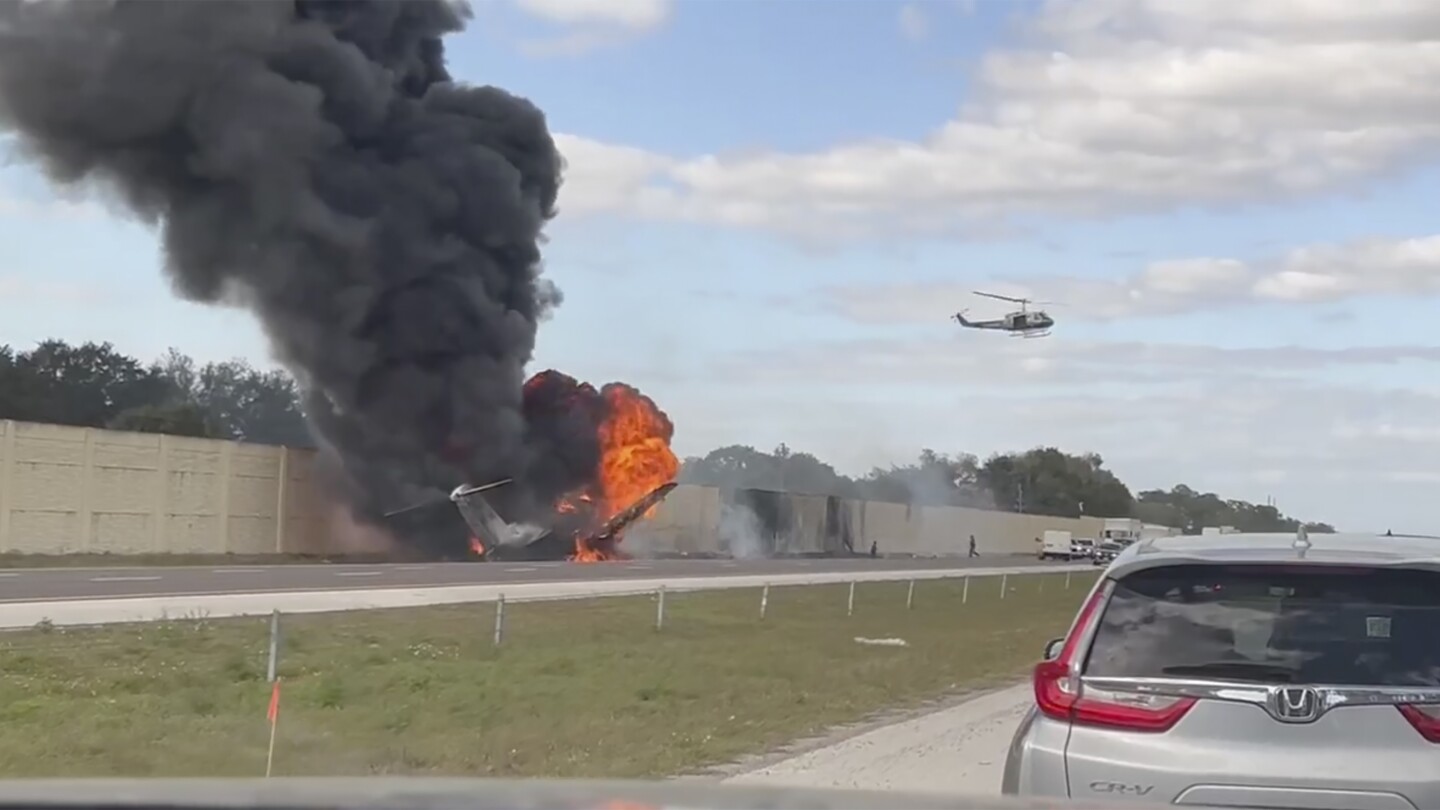The Federal Aviation Administration said the Bombardier Challenger 600 jet had five people were aboard when the crash happened around 3:15 p.m. Friday near Naples, just north of where the interstate heads east toward Fort Lauderdale along what is known as Alligator Alley.
The FAA and the National Transportation Safety Board will investigate, with the NTSB leading the investigation. One NTSB investigator arrived at the crash site Friday afternoon, with several more expected to arrive on Saturday.
Brianna Walker saw the wing of the plane drag the car in front of hers and slam into the wall.



The only thing I’m aware of that would take out both engines at the same time is bird strikes … especially if they were already in an approach.
Do jets like this have independent fuel tanks and fuel pumps per engine? I would imagine redundancy is king and this is obvious but I know nothing of aviation.
I’d expect redundant fuel pumps, redundant fuel lines in order for any tank (and any pump) to fuel all engines while shutting the remainder of tanks (and pumps) off. That’s been around since piston engine fighters in WWII at least.
AFAIK every jet engine plane has wing tanks with fuel pumps (to distribute the weight evenly).
But I’m not an engineer or pilot so could be wrong on that.
This plane has several tanks and several fuel pumps per engine, as well as a fuel filt bypass in the event of a filter clog. The most probably cause for this crash was either a) birds. or B) single engine failure close to the field and the pilots killed the remaining good engine by mistake and with so little altitude (the flight was nearly complete and they were only about 1000ft AGL and less than a mile from the airfield) they could not restart the plane. These are the most likely reasons for the crash. Really sad either way.
https://www.smartcockpit.com/docs/CL605-FUEL_SYSTEM.pdf
That’s for the 605, which I assume isn’t too different. It says “The boost pumps can provide fuel to both engines fuel feed systems through a crossover feed line.”
A quick read suggests that primary fuel pumping is powered by the engines, and the boost pumps are only used to boost fuel pressure (e.g. when first starting the engines). There are also multiple systems, including plain old gravity, to move fuel around between the various tanks.
Yes, depending on the manufacturer they could have multiple pumps per engine, separate tanks, crossfeed from the opposite tank etc.
Lots of options, fuel starvation, contaminated fuel, exceeding the altitude limits of the aircraft or engines and improper restart procedures such as Pinnacle 3701 in 2004. Many many more options, the NTSB has very skilled accident investigators and almost certainly will find the cause, and then blame the pilots.